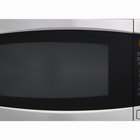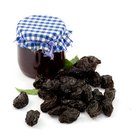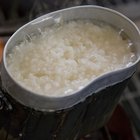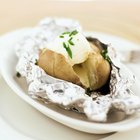
The reputation of World War II-era pressure cookers for exploding might make modern cooks think twice about using them. But according to a January 2013 article in Cook’s Illustrated, today’s pressure cookers are full of safety features that Grandmother’s pressure cooker never had. And the simple scientific principles at work in these modern kitchen marvels enable foods to cook 70 to 90 percent faster traditional stove top methods.
Pressure Cookers 101
A pressure cooker is a sealed pot with a valve in the lid that captures steam and controls the pressure inside the pot. Both electric and stove top models work the same way. As the steam inside the sealed cooker heats but cannot escape, the pressure inside the pot rises.
Pressure Plusses
This moist, high-pressure environment does two important things that speed cooking time: It raises the boiling point of the water. Water in a conventional pot boils at 212 degrees Fahrenheit, no matter how long or vigorously it is heated. But when water is subjected to pressure inside a pressure cooker, it is harder for water molecules to turn to vapor, and water’s boiling point can be raised to 250 F. It forces liquid into the food. The pressure forces steam and liquid into foods very quickly, transferring heat to food more efficiently and speeding cooking time even further. This high-heat, high pressure method also makes some foods – such as tough meats -- moist and tender, compared with a traditional stove top preparation.
Further Benefits
Because a pressure cooker is a sealed environment where water can’t escape, using a pressure cooker requires much less liquid than traditional stove top cooking, and flavors are concentrated. Once high pressure in the cooker is reached, the heat is turned down to low while cooking continues. Low cooking flames and short cooking times both contribute to energy savings of 70 to 90 percent when using a pressure cooker.
Vegetables cooked in a pressure cooker are ready so quickly that they lose almost no nutrients to cooking. The very scant use of water also helps veggies retain their vitamins. People wary of microwave ovens might take comfort, knowing that pressure cookers are completely natural, and use only the power of atmospheric pressure to cook foods quickly.
One Caveat
The sealed environment that enables pressure cookers to be so fast is also one that is tricky for home cooks to get used to. Once the food goes into the pot, the cooker is sealed and the food can’t be seen, tasted or touched until it’s done. This is a new way of cooking for many people, and you must learn new skills to adapt to this type of cooker.
Related Articles

What Is the Difference Between a ...

How to Convert Stovetop Recipes to ...

Solar Cooker Facts
Convection Oven vs. Pressure Cooker

The Positive Effects of Using a ...

How to Cook on a Stovetop Grill
Does Slow Cooking Take Nutrients Out of ...

How to Cook Brats in a Pressure Cooker

How to Can Jelly Using a Pressure Canner

Difference Between Soap & Synthetic ...

How to Cook Rice in a Thermos

What Is a Braising Pan?

How to Use an Indoor Electric Grill

How to Use a Probe Cooking Thermometer

Can You Cook Steak & Gravy in the ...

The Advantages of Wok Cooking

How to Use a Smoker Box for Gas Grilling

How to Make a Foil Wrapped Potato

How to Cook Frozen Dumplings With a ...

The Difference Between a Chafing Dish & ...
References
Resources
Writer Bio
Janet Burt has written professionally for more than 20 years, specializing in business, careers, healthcare and the arts. Her work has appeared in “Self,” “Focus,” and “The Philadelphia Inquirer,” among other places. Also a professional artist, Burt has a degree in English and German from Colgate University.
Photo Credits
Hemera Technologies/PhotoObjects.net/Getty Images